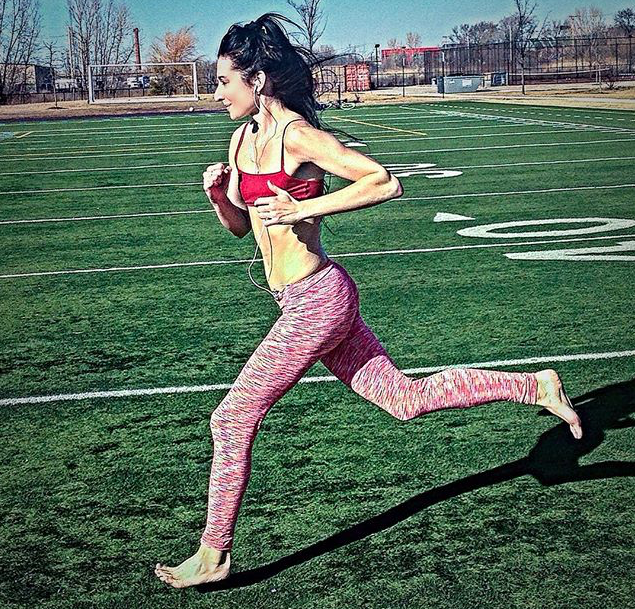The major cries from barefoot running learners is that they have lingering muscle soreness. Muscle pain from barefoot running doesn’t mean you are going to get an injury, it just means that your body is going through adaptive changes in response to running without shoes. Remember, barefoot running is good therapy for your biomechanics — it will help you land better on your forefoot.
So, how long does the muscle pain last?
How Long Does Muscle Soreness From Barefoot Running Last?
According to Tam et al. 2016, muscle soreness in new barefoot runners predominantly occurs within the first week where the calves, hamstrings and quads are typically the most sore as compared to the shins and glutes. Based on the data from the study, muscle soreness may persist for 8 weeks, BUT there was one major problem with the study: the shod runners in the study were told to run barefoot for 8 weeks, uninstructedly –this means, the runners were not informed on the proper landing strategy in barefoot running (a forefoot strike), which is the first step to reducing impact on the body.
The good thing about the study however, was that NONE of the runners experienced any severe injuries or symptoms that caused them to miss any one barefoot training session. If they had been instructed to land with a forefoot strike with greater knee flexion, than the degree of muscle soreness as well as the duration of muscle pain would have been significantly smaller.
It’s been established that if learned properly, barefoot running can virtually stave off most of the running-related injuries experienced in shod runners. And, I don’t really think you can overwhelm your body if you run barefoot at a high mileage, as long as you are being conscious about executing a proper forefoot strike and leg swing mechanics.
As a basis for a cushy landing, what you really need to do is land on your forefoot and bend your knees at all times. This will help you land in a way that you are comfortable with, and when you feel comfortable when you run, your muscles are not being exerted or strained, and are less likely to become sore.
Another good starting place is to do your own research on how to run barefoot and see what other’s are saying based on their experience.
More From Run Forefoot:
Alternatives to Barefoot Running
Who is Dibaba and Why Her Running Form is Important
Best Alternative to the Merrell Vapor Glove
References:
Tam et al. Individual Responses to a Barefoot Running Program: Insight Into Risk of Injury. Am J Sports Med, 2016; 44(3): 776-784.
Bretta Riches
BSc Neurobiology; MSc Biomechanics candidate, ultra minimalist runner & founder of RunForefoot. I was a heel striker, always injured. I was inspired by the great Tirunesh Dibaba to try forefoot running. Now, I'm injury free. This is why I launched Run Forefoot, to advocate the health & performance benefits of forefoot running and to raise awareness on the dangers of heel striking, because the world needs to know.
Latest posts by Bretta Riches (see all)
- Does Foot Strike Really Matter in Running? YES! - 17/04/2024
- Heel Lifts Increase Injury in Runners - 16/04/2024
- Are Minimalist Shoes Good for Seniors? YES! - 14/04/2024

